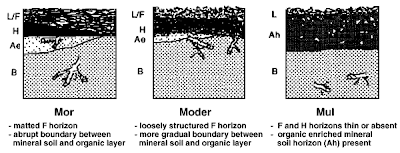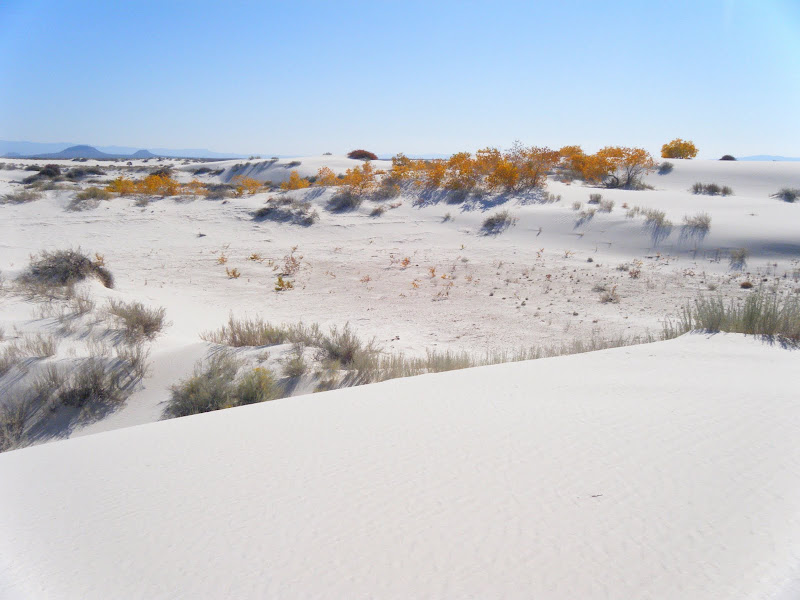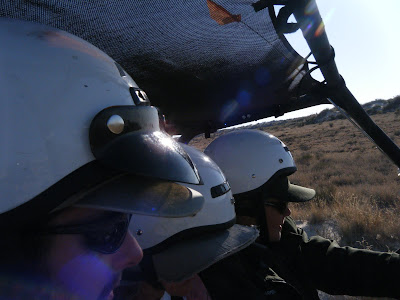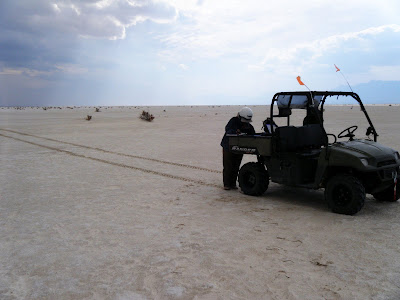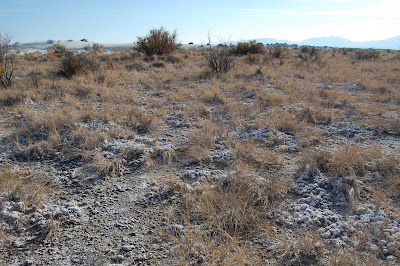"No characteristics of the channel provide indication of why some reaches scoured when the rest of the reach filled ... When there are a large number of interrelated factors which must adjust among themselves in response to occurrences in the environment, such as storms or flows, it should be expected that there will generally be an indeterminacy in the manner of this mutual adjustment.... Where a particular factor dominates, such as a bedrock floor of a channel, the effects of this factor may be readily evident. However, where the alternatives become more nearly equivalent it becomes more difficult to specify the precise form in any give case...This indeterminacy in a given case results from the fact that the physical conditions, being insufficient to specify uniquely the result of the interaction of the dependent variables, are controlled by a series of processes through which any slight adjustment to a change imposed from the environment feeds back into the system." (Leopold, Wolman, Fluvial Geomorphology. describing the equivocal results on their study of the dry wash (ephemeral channel) near Santa Fe, NM Arroyo de los Frijoles:)
 |
| From La Jencia Assessment Fall 2009 |
Context: La Jencia Ranch is located near the continental divide, west of the Rio Grande, north of the Magdalena mtns at about 5500 feet in a broad almost-closed basin composed of Pleisticene-sediment. Springs feed an intermittent reach in what is otherwise an ephemeral system. The watershed above this point is approximately 350 square miles, and large bursts of storm water have contributed to massive erosion in this area. By anecdotal reports, this entire canyon system (with 100+ foot walls) has cut in the last 120 years since Anglos homesteaded in the 1880s. This report is corroborated by the evidence of recently rejuvenated side canyons and active headcuts.
A continuing riparian restoration project has been focused on planting trees throughout the developing floodplain and meander cutoffs near ranch HQ. The continued lateral and vertical (down-cutting) erosion in the canyon is a management concern.
In the storm of 2006 a number of major hydrogeomorphic changes took place, notably the cutoff of several large meanders. This had the effect of significantly shortening and steepening the main channel. In a ~10 foot flood this September, another large meander was cutoff, in addition to significant erosion (and deposition) in other parts of this very dynamic system.
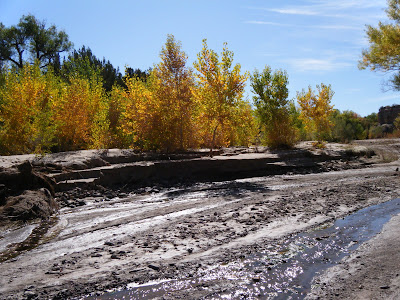 |
| From La Jencia Assessment Fall 2009 |
Observations:
scoured out or deposited feet of sediment on benches cuts some places, stable others
looks like it wants to meander morehas active floodplain
flood was 6-10 feet high
widened in some places
in other places sedges and willows in middle survived
large meander cutoff downstream of house
General Conclusions: did not downcut (degrade) during this flood, contra the 2006 flood. While an over-meander did cutoff as could be expected, it did not create a headcut, as was feared.
stream has access to floodplain. some deposition and scour over this surface is natural. La Jencia is a high-disturbance system.
NOT Down-cutting, and possibly AS GOOD AS IT GETS
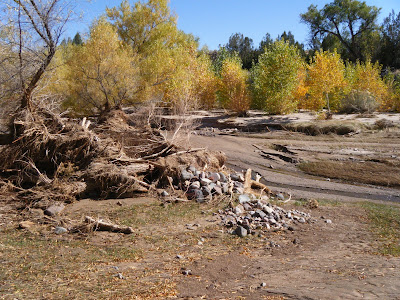 |
| From La Jencia Assessment Fall 2009 |
Caveats: It is important not to be drawn into individual cut banks, but rather to evaluate the system on a whole.; "the failure of some in stream willow plantings (ISWP) does not invalidate the concept". In fact, some of the outside-meander plantings did hold. Other reaches of the channel that don't bend as much and had thick sedge growth were almost unchanged. Eventually, the entire channel could look like these reference reaches. However, whether planting can drastically change what would already happen otherwise, is unknown. Perhaps more a function of how many years between scouring floods.
Problems: inability to think in derivatives (rates)
"average" wide distributions of high frequency-low magnitude events with low frequency-high magnitude events
talk about average or equilibrium in the midst of constant flux (writhing serpent metaphor for channel evolution)
think about very complex systems (see climate change). things are changing, but is there a trend (what scale to think (average) at?) and are we affecting it?
compute running averages at different scales
Case Examples:
There's a difference between downcutting (lowering of base elevation) and degrading, which could include lateral erosion. Steepening is another thing altogether. So, for example, at the meander cut-off, the grade steepened and the channel length shortened, but a headcut did not start, and areas immediately upstream and downstream are still at the same elevation, so downcutting did not occur. Whether this area ends up aggrading at the bottom of the steepened section or degrading at the top of the section depends on the nature of future hydrographs and sediment supplies.
Uplands:
The uplands are key to understanding how "natural" the channel evolution and morphology are. Grazing stress has been removed on-site, but could still be contributing to watershed degradation. Measurements of runoff on grazed and ungrazed areas of the watershed could yield calculations about the magnitude and frequency distribution of floods. La Jencia, like other ephemeral streams, may not be wet enough to support enough veg to maintain stability in the face of giant floods. Or maybe floods are changing in magnitude.
If the channel is slightly unstable, as indicated by the variance of Van's channel cross sections, this continued instability could be attributed to the nature of the system (basically, ephemeral) and/or the condition of the contributing watershed (degraded, causes increased ephemerality and flashiness).
Van emphasized the sediment supply could be contributing to instability, and that this sediment was locally generated by the magnitude of these events. Was this a 20-year flood?
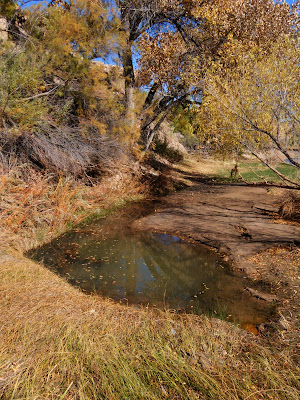 |
| From La Jencia Assessment Fall 2009 |
"Apparently the tendency for the maintenance of quasi-equilibrium in stream channels is sufficiently pervasive that only slight deviations, if sustained for long enough periods of time, may account for aggradational features of considerable magnitude, but the deviation from equilibrium conditions necessary for the construction of such depositional features cannot be recognized or identified by any criteria now available. Only by measurement over time can the net direction of river change be determined..." (Leopold, ibid)
